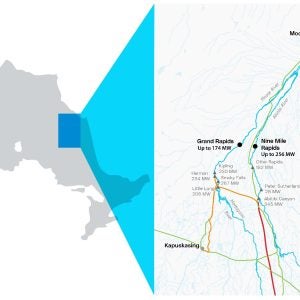
A new study suggests that hydropower generation across the continental United States is likely to increase with climate change, although certain regions may experience drier conditions and decreased production.
The study, published on August 8 in Environmental Research Letters, shows that while warmer temperatures will bring more rain instead of snow in the Pacific Northwest, reducing winter snowpack, hydropower generation is still projected to rise in most areas. This shift will require water managers and grid operators to adjust how and when dams produce electricity.
“We know the climate is changing and we know that’ll affect how much water will be available to produce hydropower,” said Daniel Broman, a hydro-climatologist at the Department of Energy’s Pacific Northwest National Laboratory (PNNL) and lead author of the study. “Our research provides a consistent look across the country, so even if water and energy planners are only looking ahead regionally, our data can provide a broader outlook.”
Hydropower, which provides 6% of the US’ electricity and 60% in the Pacific Northwest, involves more than power generation. It also supports flood control, transportation, irrigation, fisheries, and natural ecosystems. Climate change impacts on hydropower will affect all these areas, making it critical for planners to understand future water availability.
The research team, including scientists from PNNL and Oak Ridge National Laboratory, analyzed streamflow and hydropower generation data from 1,544 facilities across the US. They used models to predict water flow changes due to climate change for two future periods: 2020–2039 and 2040–2059.
Results indicate a general increase in hydropower production of about 5% in the near term and 10% in the midterm across the continental US, potentially due to higher precipitation levels as the Earth warms. However, some parts of the Southwest, already dealing with drought, may see a slight decline of 3–6% in hydropower production in the near term.
Broman cautioned that because the future of climate change is uncertain, the range of possible outcomes for hydropower generation is wide. “Seasonal changes could also have big implications for how water is managed across the country,” he added.
The study found that winter hydropower generation may increase by 12% in the near term and 18% in the midterm. Conversely, in the summer, hydropower generation may decrease by 1–5% in the western US, while the eastern regions could see a rise of 1–5%, both in the near term.
Changes in snowpack also affect hydropower generation. Historically, mountain snowpack has stored water until late spring and summer, generating electricity when it melts. But as temperatures rise, snow melts earlier, resulting in less water for summer electricity production. “Snow is storage. If the snow melts earlier, it changes the timing and volume of water availability,” said Nathalie Voisin, chief scientist for water-energy dynamics at PNNL and coauthor of the study.
Despite potential seasonal declines, Voisin emphasized hydropower’s reliability as a renewable energy source. “Hydropower can be dispatched as needed and provide stability to the grid as a whole,” she said.
Broman and Voisin hope their findings will help power system operators and water managers make better decisions about hydropower’s role in a changing climate. “Utilities may be thinking about hydropower generation under climate change for their own region, but the electricity grid is bigger than that,” Broman noted.
The study was supported by the Department of Energy’s Office of Energy Efficiency & Renewable Energy’s Water Power Technologies Office.






